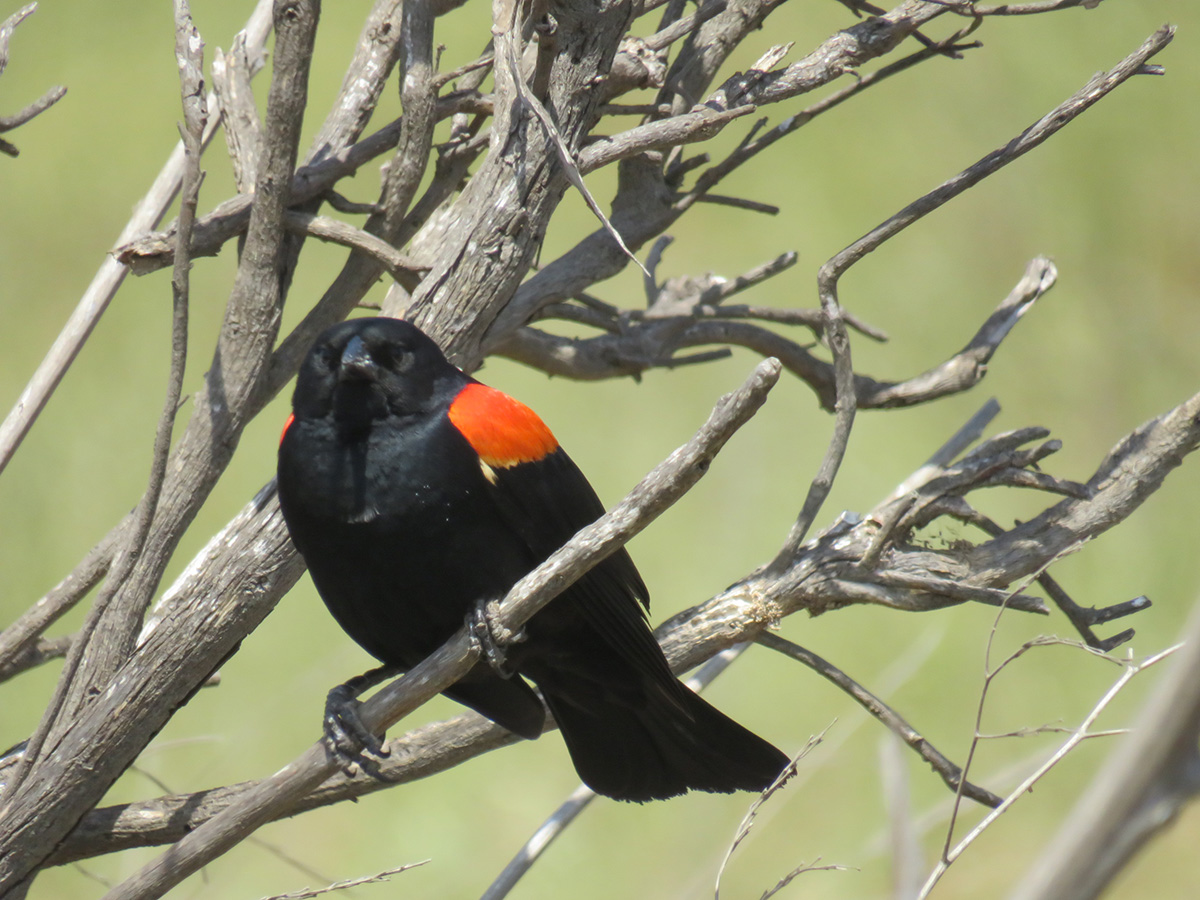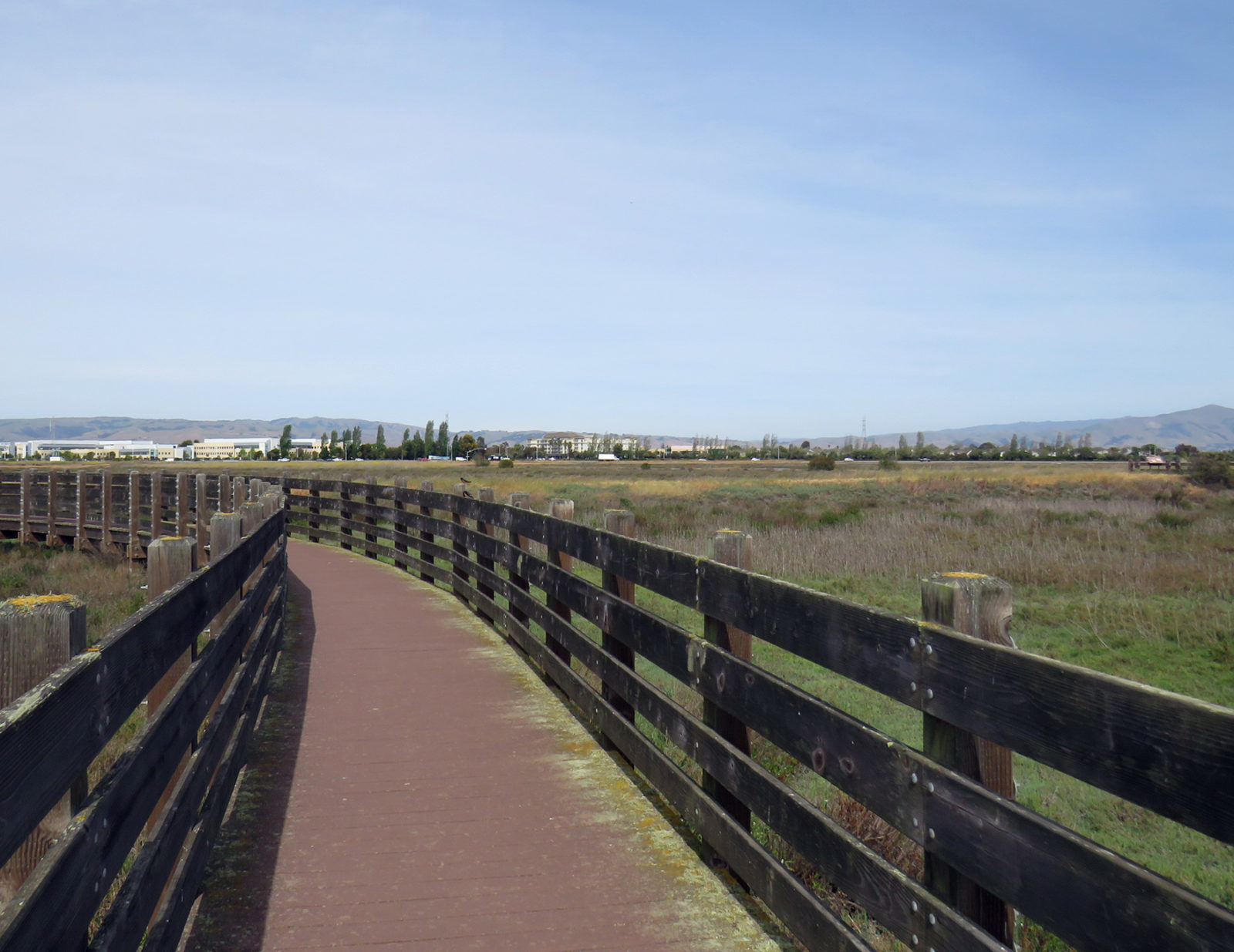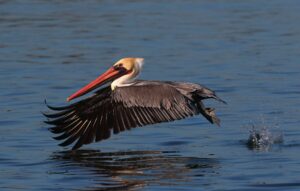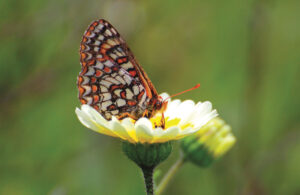I hear a melodic chirping. I turn to see the flashy red patch of the male red-winged blackbird by the entry to the Don Edwards San Francisco Bay National Wildlife Refuge in Fremont. Established in 1974 as the country’s first and largest urban national wildlife refuge, Don Edwards spans over 30,000 acres of wetlands, marshes, ponds, vernal pools, and upland habitat in the South Bay. Observers have sighted over 280 species of birds here. In the winter, millions of birds stop to rest and refuel in the refuge after their long journeys along the Pacific Flyway.
Over 30 miles of trails run through the refuge, portions of which are in East Palo Alto, Alviso, and Redwood City. I walk down the 1.8-mile Tidelands Trail to Newark Slough–a slow-moving channel of water that snakes around marshes adjacent to the Bay. Twice a day, tides push Bay water into the slough. Thousands of invertebrates wash in, providing food for a variety of wildlife. Out of the corner of my eye, I notice a great egret is entering the slough carefully lifting each black leg as if tiptoeing. Suddenly, it jabs its yellow beak into the water. In an instant, it pulls its beak out and shakes water off its striking white plumage.

In the early 1900s, demand for ladies’ feathered hats led to the slaughter of egrets and other birds. This indiscriminate killing of birds ignited the birth of the Audubon Society —the egret was their official symbol. President Theodore Roosevelt was sympathetic to their cause. He wrote a letter to ornithologist Frank Chapman noting: “Spring would not be spring without bird songs, any more than it would be spring without buds and flowers.” In 1903, Roosevelt set aside Pelican Island in Vero Beach, Florida as the first wildlife refuge. Today, Don Edwards is one of over 500 national wildlife refuges with a mission to protect fish, wildlife, and their habitats.
I think of this as I watch the egret. Then, I notice a snowy egret land about five feet from its larger relative. It’s smaller in stature with a black beak. Near both egrets, a double-crested cormorant pops its long, graceful black head and neck out of the water and then quickly dives back down out of sight. Unlike ducks and other waterfowl, cormorants have less preen oil, so their wings remain wet, enabling them to quickly dive after fish. They often perch on docks to stretch out their wings to dry in the sun.

Near the slough, barn swallows dive bomb for insects. One with vibrant blue and rust red coloring lands on a boardwalk post. Soon, I see its forked tail as it flies off in search of more insects to devour. Although they look diminutive, unmated male barn swallows will sometimes move into a mating pairs’ nest, killing the hatchlings and copulating with the female.
Plovers and other small shorebirds peck at insects along the mudflats. Black-necked stilts stand at the edge of the Bay with their eye-catching black and white plumage. Their common name is in reference to their long legs, built for wading in the water. Nearby, I spot the rust-colored head of the American avocet. At only one day old, young avocets can walk, swim, and catch prey.
As I continue my walk, a pungent salty smell fills the air. Beginning with the Gold Rush in 1849, the commercial salt industry altered wetlands to create salt ponds. Destruction of these wetlands continued for several decades and the restoration of them is ongoing.
After hiking the 5-mile Newark Slough Trail, I walk toward the uplands on the Tideland Trail. Coyote brush, oaks and other vegetation grow in this area. Trees and shrubs provide shade and habitat for mammals like the gray fox. Their sharp claws for climbing trees makes them the most cat-like of all canids and earns them the name “tree fox” or “cat fox.”
The trail winds back to the parking lot. Across Marshlands Road, steps lead down to the 100-acre LaRiviere Marsh. The marsh’s namesakes, Florence and Phillip LaRiviere, advocated for the establishment of a refuge in the 1960s. They formed a citizen’s advocacy group and captured the attention of California Congressman Don Edwards. Florence LaRiviere emphasized: “Back then the Bay was something to use – for sewer outfalls, garbage dumps, anything you didn’t want you put in the Bay.”

The battle did not end with President Nixon’s signature to create the refuge in 1972. In 1988, the LaRivieres and other residents formed the Citizens Committee to Complete the Refuge. Their lobbying efforts and the support of Congressman Don Edwards added an additional 20,000 acres to the refuge, doubling its size.
The restored wetlands in La Riviere Marsh, formerly salt ponds, are home to the endangered Ridgway’s rail and the salt marsh harvest mouse. Rails resemble chickens in body shape, and have a long-curving beak and cinnamon colored breast. Habitat loss and non-native predators such as red foxes threaten their survival. Like the Ridgway’s rail, the salt marsh harvest mouse’s habitat has shrunk. Measuring less than three inches long, this tiny rodent can drink salt water and swim for hours.
I think about the rail, the harvest mouse, and the other fascinating creatures who live in and visit the refuge. Without dedicated community members and a determined congressman who took up their cause, the refuge might never have been. As the sun sets, I walk up the steps toward the parking area. I feel far away from the development that surrounds me. I could spend a lifetime at this refuge and never tire of it.





